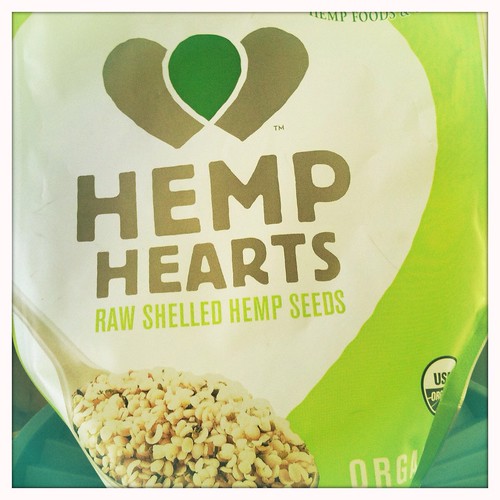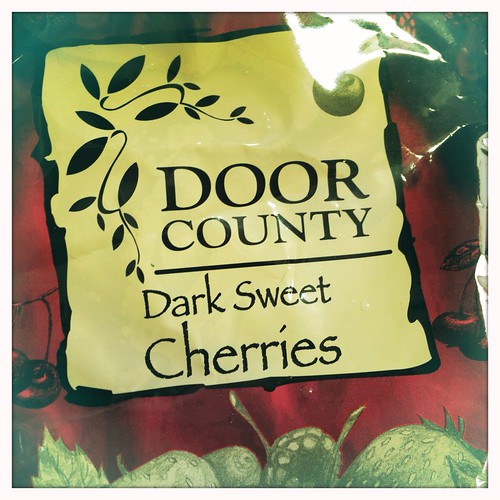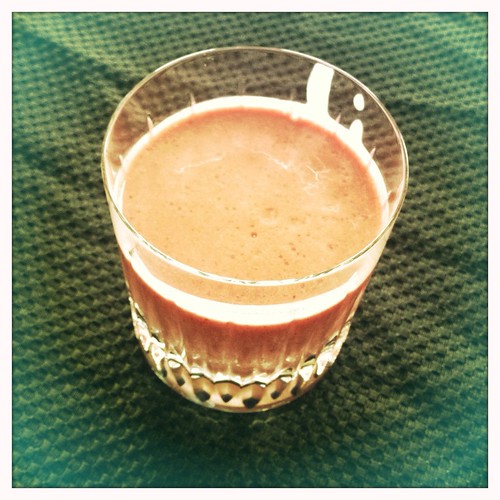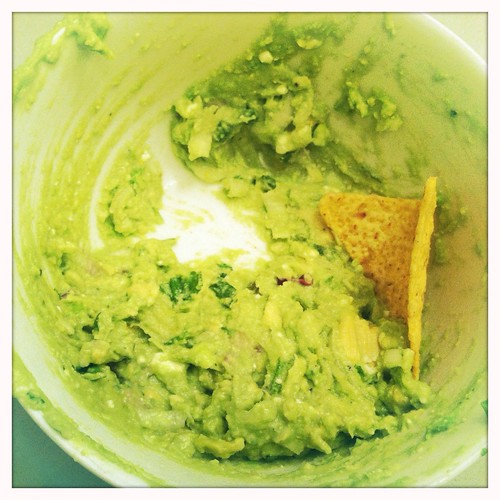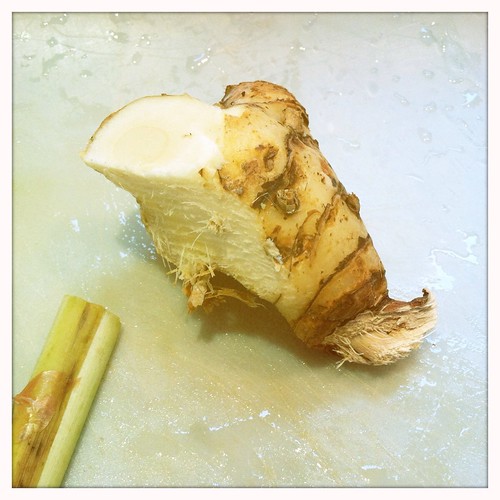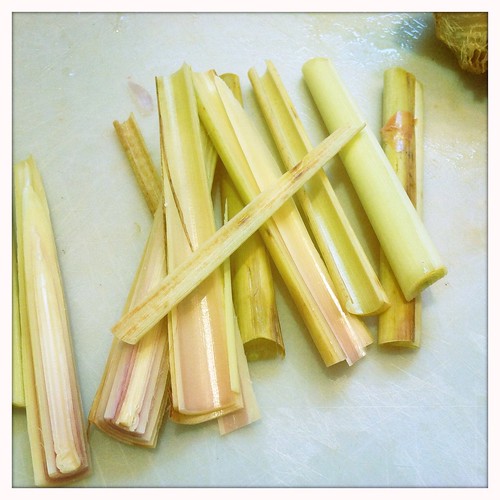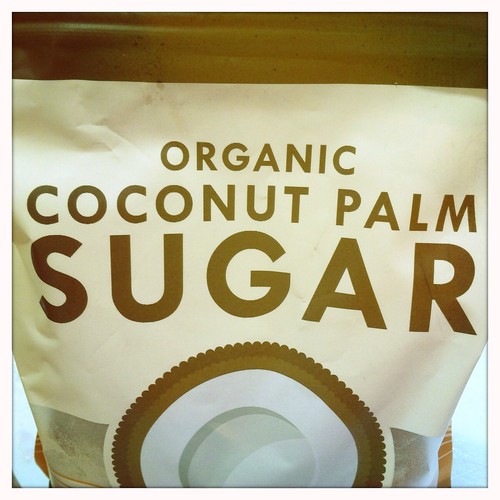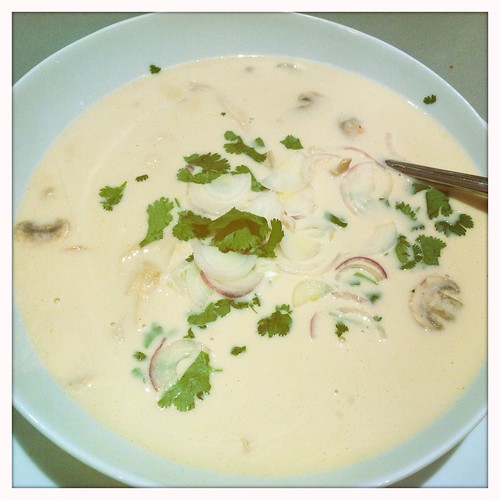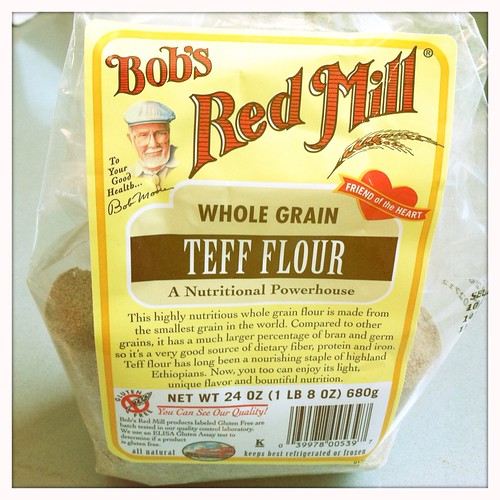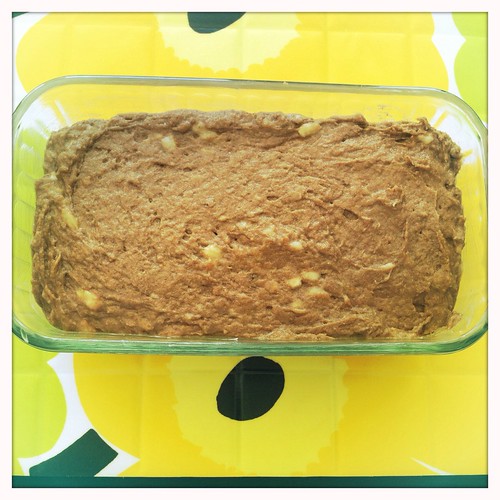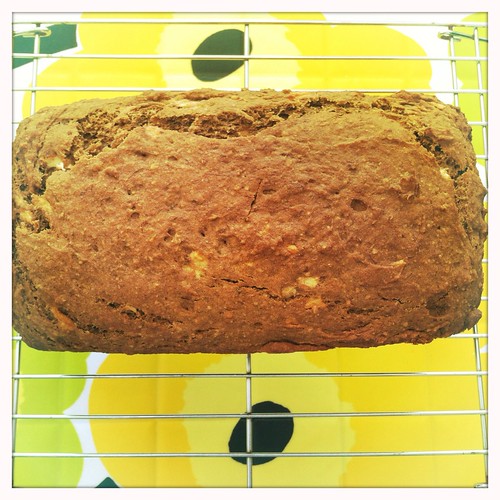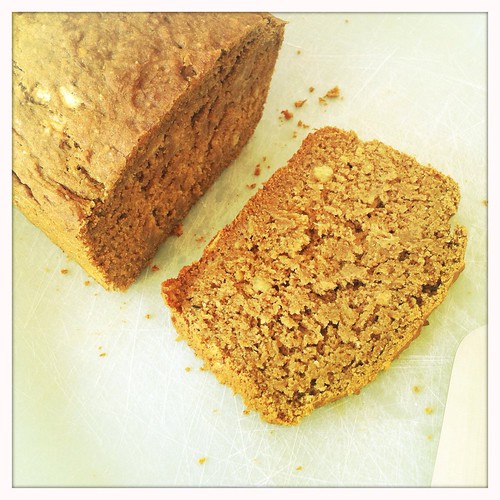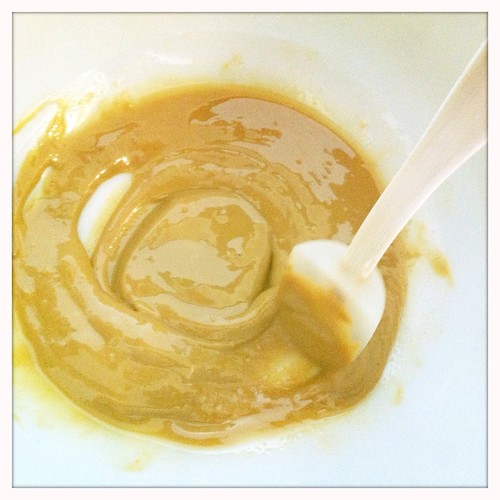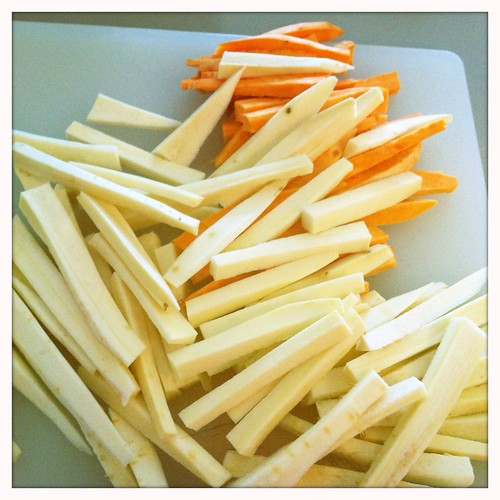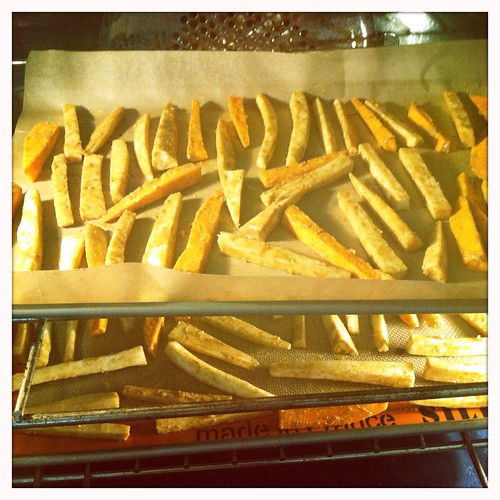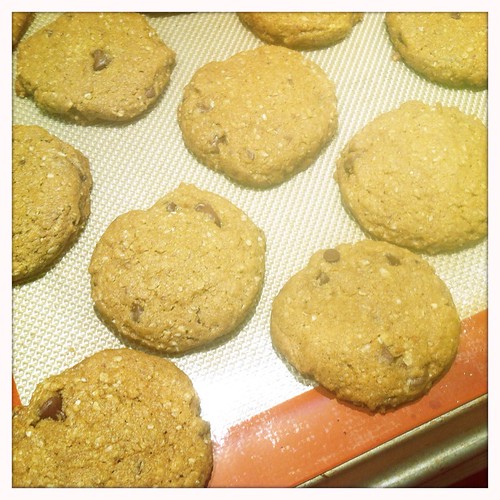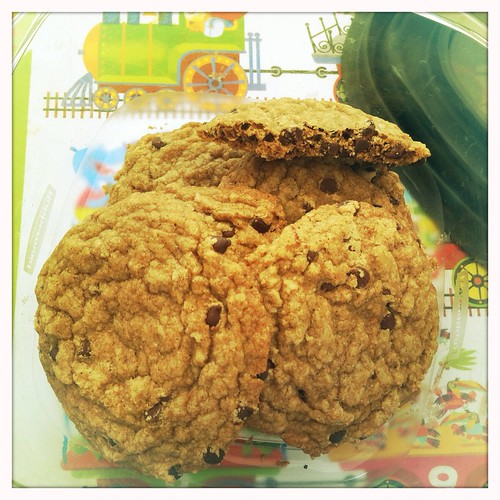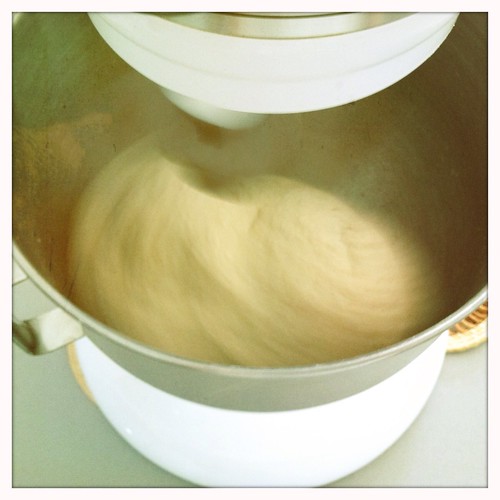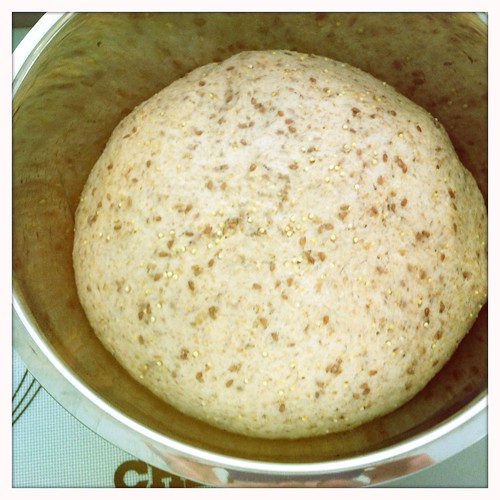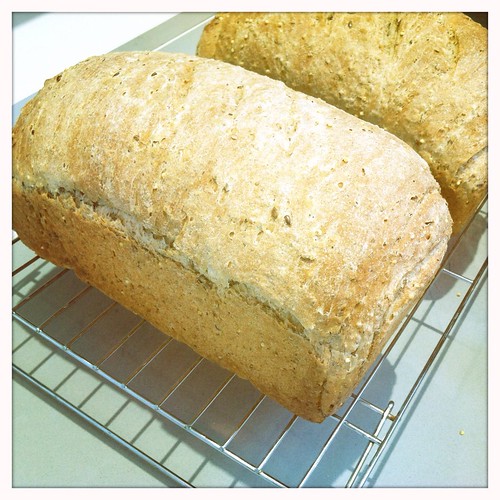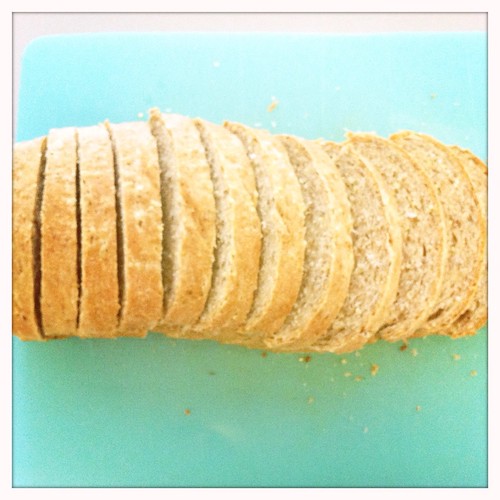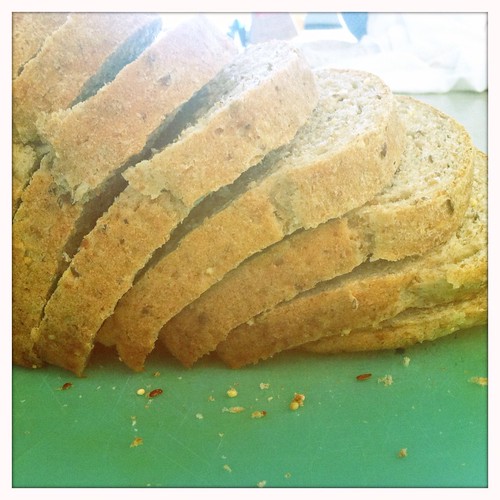So. I can't remember if I mentioned it here or not (and evidently I'm too lazy to bother checking for myself), but: I've (fairly) officially gone (mostly) wheat-free. Annoying, right? You don't have to tell me. The title of this blog was once upon a time meaningful -
cakes!
tarts!
cookies!
OMG cookies!
treats galore! (And
waffles, which I pretended were not a treat, and which, quite frankly, I miss more than
any old cake or
cookie.)
But things happen. And I did an elimination diet. And I have wheat issues. Not major wheat issues. But issues that I've been in denial about for about six years (or maybe since childhood, actually, but we'll never know). Issues that are getting worse as time goes on. Itchy issues that would definitely get in the way of me sporting shorts or even modest, mommy-appropriate capris in the summer. Nobody wants to read about dermatitis on a food blog, I realize that, but food is loaded - we discuss that a lot in my classes. We come to food with baggage - regional, financial, medical, etc. I've just got some new, decidedly unsexy baggage now. It is what it is. An American Standard Diet portion of wheat causes eczema on my shins. So for now, I can only really tolerate a little bit of wheat on occasion, and I intend to reserve that bit for Chef Shack Indian-spiced doughnuts this summer.
All in all it's not that bad. We're used to eating mostly wheat-free because of Beckett's allergies. It's just something more for me to think about when I go out. And it's kind of cramping MC's style, as he is our resident bread artisan. And it means I won't be making the one kind of bread that I know how to make, which I'm posting about here as a sort of glutenous last hurrah before I embark on a series of gluten-free, vegan baking posts (for Charlotte).
It's the perfect sandwich bread. Perfect toast. Easy to make (barely any kneading if you use a mixer with a dough hook), easy to store (slice and freeze), easy to slice (so please let the knife do the work). If you are wheat-eaters, you should make this. It's based on the America's Test Kitchen recipe for Multigrain Bread, but I've modified it to make it (a) vegan, and (b) maple-millet-flax-y. The latter modification was inspired by my favorite bread from Lucia's, one of the best restaurants/bakeries in Minneapolis, conveniently located 2.5 blocks from my house. They sell loaves of millet-flax multigrain bread and they also serve their tuna melts and breakfast sandwiches on it. It's crunchier, denser, and more rustic than the super soft sandwich bread pictured below, but has a comparable flavor. So if you're in Minneapolis, not into making bread, into eating bread, and interested in trying some millet-flax multigrain, you'll have to check out Lucia's. I gave my last loaf to my friends as a happy-end-of-Passover-bring-on-the-leavened-bread gift.
Notes!
1. My perfectionist, artisan breadmaking husband has convinced me that you need the following tools to make bread: a kitchen scale, a probe thermometer. I have had minimal success making bread without a mixer (I am no good at kneading). How I've written the recipe will reflect my reliance on these items.
2. This makes two large loaves. You could probably halve the recipe, but I wouldn't. It's cheap and easy to make and it's time-consuming, so you might as well end up with extra for freezing or sharing.
3. I said in my blah-blah-blah above that you should let the knife do the work when you cut. That recommendation is not to be taken lightly. This is amazingly soft bread, similar to the non-natural-and-organic kind you buy from the grocery store. Wonder Bread texture. Seriously. But also vulnerable. You'll squish it if you put too much back into your slicing. Slow and steady wins the race, friends.
4. I would not recommend using 100% whole wheat flour (i.e. swapping more whole wheat flour in for white flour). Just find a different recipe for whole wheat bread if that's what you're after.
5. I did an experiment for you! America's Test Kitchen uses cooking spray as a pan release, evidently, and I do not own that. The last time I made this bread, however, I used olive oil to grease one pan and Spectrum Hypoallergenic Shortening (that's not what it's really called, that's just what we call it in our hypoallergenic home - the soy free/mostly palm oil one) to grease the other. The shortening was WAY better. The olive oil one came out fine, but it was stressful. Now you know.
Maple-Millet-Flax Multigrain Bread
Adapted from America's Test Kitchen/Cooks' Illustrated
Yield: 2 standard-sized loaves; about 24 slices
Time: From start to finish, this will take about three-four hours, with about 30-40 minutes of periodic active work.
6 1/4 ounces 7-grain (or 6-grain) hot cereal mix (1 1/4 cups)(I used
this one)
20 ounces boiling water (2 1/2 cups)
15 ounces unbleached white (all-purpose) flour (3 cups)
7 1/2 ounces whole wheat flour (1 1/2 cups), plus extra for dusting surface/hands
1/4 cup maple syrup
1/4 cup olive oil, plus more for greasing pans and coating
2 1/4 teaspoons (1 envelope) instant yeast (this is same as "rapid rise" yeast)
1 tablespoon fine-grain sea salt
1/3 cup whole flax seeds
1/3 cup uncooked millet
Place X-grain cereal mix in bowl of standing mixer and pour boiling water over it; let stand, stirring occasionally, until mixture cools to 100 degrees and thickens, about an hour. Meanwhile, whisk flours in another bowl.
Once grain mixture has reached the temperature of a nice bath, add maple syrup, olive oil, and yeast and stir. Attach bowl to standing mixer with dough hook. Turn mixer on low speed and add flours gradually, half cup at a time. Once all the flour is incorporated, continue kneading on low speed for about two minutes. Dough will form a ball. Turn mixer off and cover bowl with plastic wrap. Allow dough to rest for 20 minutes. Uncover, add salt and knead on medium-low speed until dough clears sides of bowl, 3 to 4 minutes (if it does not clear sides, add 2 to 3 tablespoons additional all-purpose flour and continue mixing; ATK says this but I've made this many times and it always clears the sides on time (perhaps because I use a kitchen scale (hint, hint))); then continue kneading for 5 more minutes. Add flax and millet and knead for another few seconds, until they are incorporated into dough.
Transfer dough to floured work surface and knead by hand until seeds are dispersed evenly and dough forms smooth, taut ball (this takes me about 2 minutes, and I suck at kneading - remember, your mixer has done most of the work for you). Drizzle 2 to 3 tablespoons of olive oil into a large bowl/container with 4-quart capacity. Place dough into container and roll it around so it's coated lightly in the oil. (This prevents a "skin" from forming while it rises.) Cover with plastic wrap and allow to rise until doubled, 45 to 60 minutes. Go for a jog. You could easily make it around Lake Calhoun at least once.
Grease two 9 by 5" loaf pans (with cooking spray or shortening, see note above) and preheat oven to 375 degrees. Transfer dough to lightly floured work surface and pat into 12 by 9" rectangle; cut dough in half crosswise with knife or bench scraper. Shape your loaves.* Place each loaf in a pan, spray or brush with a little oil. Cover lightly with plastic wrap and let rise until almost doubled in size, 30 to 40 minutes. (Dough should barely spring back when poked with knuckle.) Bake until internal temperature registers 200 degrees on instant-read thermometer, 35 to 40 minutes. I rotate my loaves in oven after 20 minutes. Remove loaves from pans and cool on wire rack before slicing, about 3 hours.
* Did you think I was going to tell you how to shape your loaves? Sorry. Heck no. That's what the youtubes are for. Start
here; note that your bread will be denser and less sticky than the white bread loaf. But this is pretty much how I do it.

